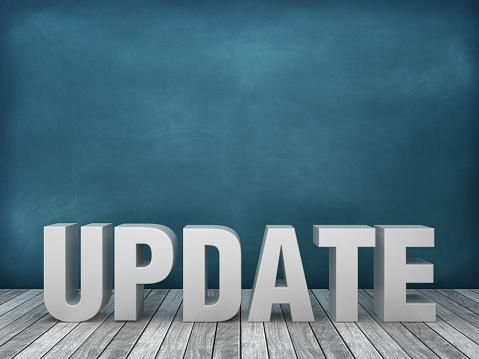Most people tend to understand PUM (PeopleSoft Update Manager). It is one of the latest upgrades introduced by the PeopleSoft ecosystem. PUM is an evident and convenient tool that helps in selective adoption and revolutionizes how PeopleSoft is supported.
Most people tend to understand PUM (PeopleSoft Update Manager). It is one of the latest upgrades introduced by the PeopleSoft ecosystem. PUM is an evident and convenient tool that helps in selective adoption and revolutionizes how PeopleSoft is supported.
PeopleSoft has, over the last few years, experienced continuous upgrades. 9.2 is the latest PeopleSoft release. This article will look at simplifying PUM and version Upgrades with PeopleSoft.
What is PUM Upgrade in PeopleSoft?
PeopleSoft is a collection of applications tailored to solve complex business needs and processes. The system enables businesses to enhance their production, lower the cost of ownership, and boost overall performance. If you currently use PeopleSoft in your organization, consider upgrading to enjoy the improved features and customize it to suit your needs. One of the best options is the PeopleSoft Update Manager (PUM) upgrade. This PeopleSoft Upgrade ensures that you always have a flexible system that is up to date.
PUM upgrade allows you to download all updates cumulatively. Once you have downloaded them, you select the capabilities you want. Those that meet your needs. You install and implement them within your PeopleSoft Upgrade, hence designing an upgrade that is more customized and adheres to the requirements of your business. Further, you can also implement patches and regulatory updates when you need them.
Purpose of the PUM Upgrade
The mastermind behind the development of the PeopleSoft upgrade, aimed at enhancing flexibility in the workplace. Every business in different industries has varying and unique needs. Therefore, providing a higher level of flexibility allows organizations to selectively adopt features that meet their needs while ensuring a cost-effective solution. Before the PUM upgrade, you had to apply bug fixes and regulatory changes either way.
The Launching of PeopleSoft 9.2 led to new ways to upgrade and fix issues within the organization’s software. You can apply PUM updates rather than bundles and packs to apply updated images.
Here Simplify PUM Upgrade with PeopleSoft
To start the Upgrade process, you should proactively examine PUM image contents in a well-defined process with the help of the right tools and highly organized methodology. To ensure the success of the PUM upgrade, consider the following guiding principles.
- Emphasis on Consistency Of Processes Over Business Unit Uniqueness
Ensure you check on the culture of exception. This means you should have fewer exceptions in processing and a more detailed examination of the necessary features. In addition, you should standardize how you will use the application across the organization. For example, each department may have a different need for the application. Therefore, you should specify the best practices and ensure they are well implemented through thorough training.
- Design the Adaptation of processes to integrate with PeopleSoft’s best practices rather than forcing PeopleSoft to support existing practices.
This means you should enhance overall efficiency through the use of various features of the system. Further, it would be best if you approved values that improve on enhancement.
- Have transparency in communication
Always communicate every essential detail to all your staff members. Communicate what the PUM upgrade provides. Early, regular and effective communication will prepare your staff members to understand how to use and take advantage of the updated features.
- Identify Customizations
In the process of the PUM upgrade, you should identify and track your customization. Several developed tools can help analyze and classify existing customizations, allowing you to review and analyze them quickly.
- Carry Out a Business Process Review
Examine your current position using a current state review. This examination aims to track the functional business process for every in-scope module. You will be able to understand where the system overlaps with the functional approach and evaluate which customization you should retain, remove, or redesign. You should also identify and establish those accountable, responsible, and consulted at each upgrade process step. This is crucial to enable you to better understand your team roles and responsibilities before proceeding to the significant upgrade.
- Gathering of information and Scope setting
This involves identifying and establishing your sense of direction, goals, and how to reach them. Establishing the scope allows you to understand when and how to make any adjustments whenever necessary as you obtain essential information.
- Continuous Delivery Methodology
PeopleSoft 9.2 Upgrade comes with a new methodology and features that help maintain your system, known as Continuous Delivery Methodology (CDM). CDM offers a formalized PUM review and update strategy that gives you continuous enhancement and unique functionality for your organization. This means that since all features are tailored to a continuous process, you will only spend less energy, time, and cost to carry out major upgrades in the future.
PUM is a Game Changer
A PUM upgrade is more ideal than going for a brief technical update. The latest version of PeopleSoft 9.2 offers an innovative feature that provides comprehensive and exceptional new capabilities that helps change your entire organization. With a version upgrade, you can expect a simple and intuitive user experience using your mobile and PC platforms, which will help change how you interact with PeopleSoft software daily. Additionally, you will enjoy creative added business features and functions and enhanced analytics.
Wrapping Up
PUM and version upgrade is a worthwhile process. It helps you to develop customized features that meet your organization’s specific needs. When considering upgrading, you should consider several key factors, such as organizational needs, reasons for the upgrade, and the additional features your organization needs. Always have prior planning and clear communication with all the users and those accountable for operating your system.













